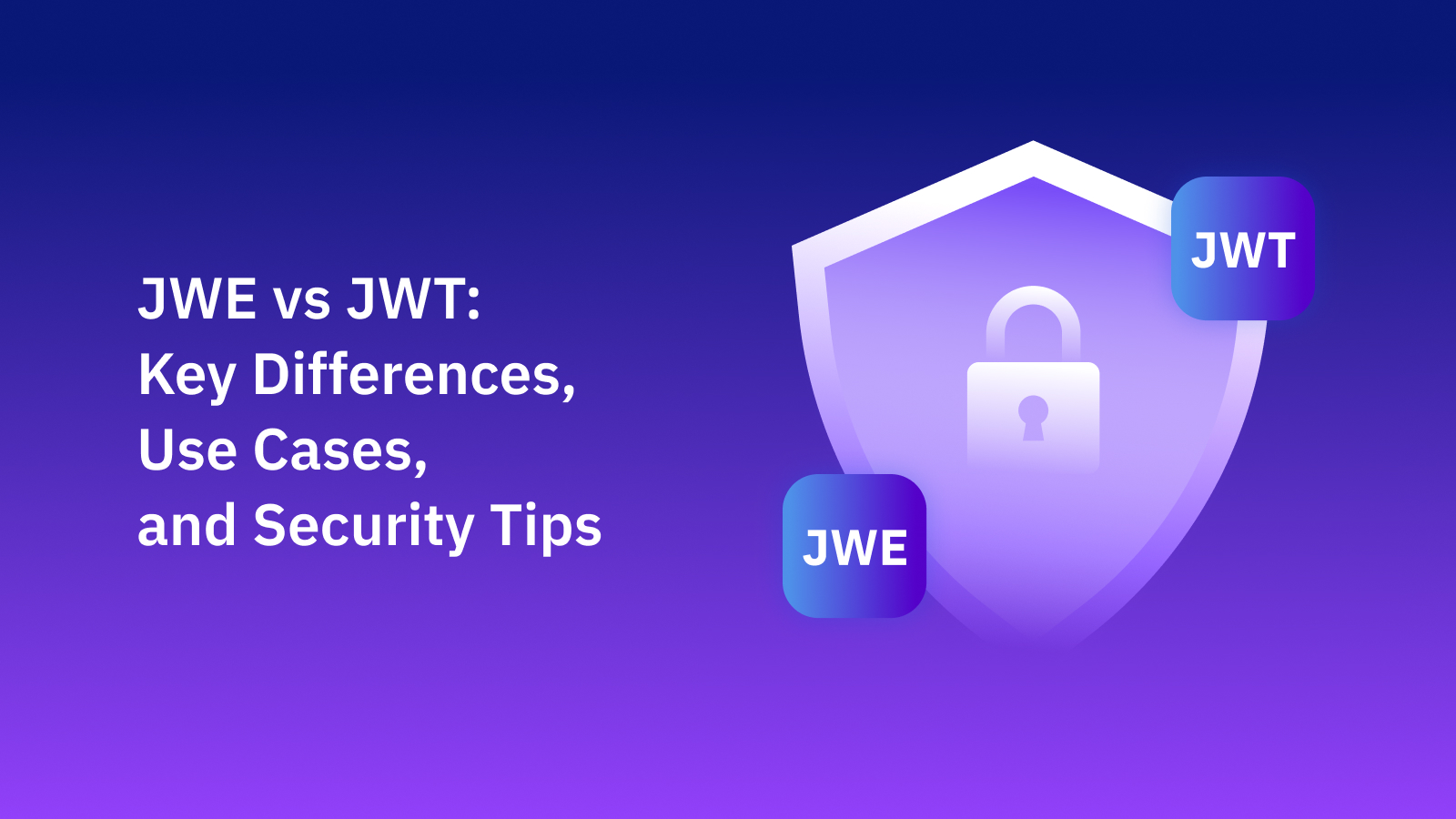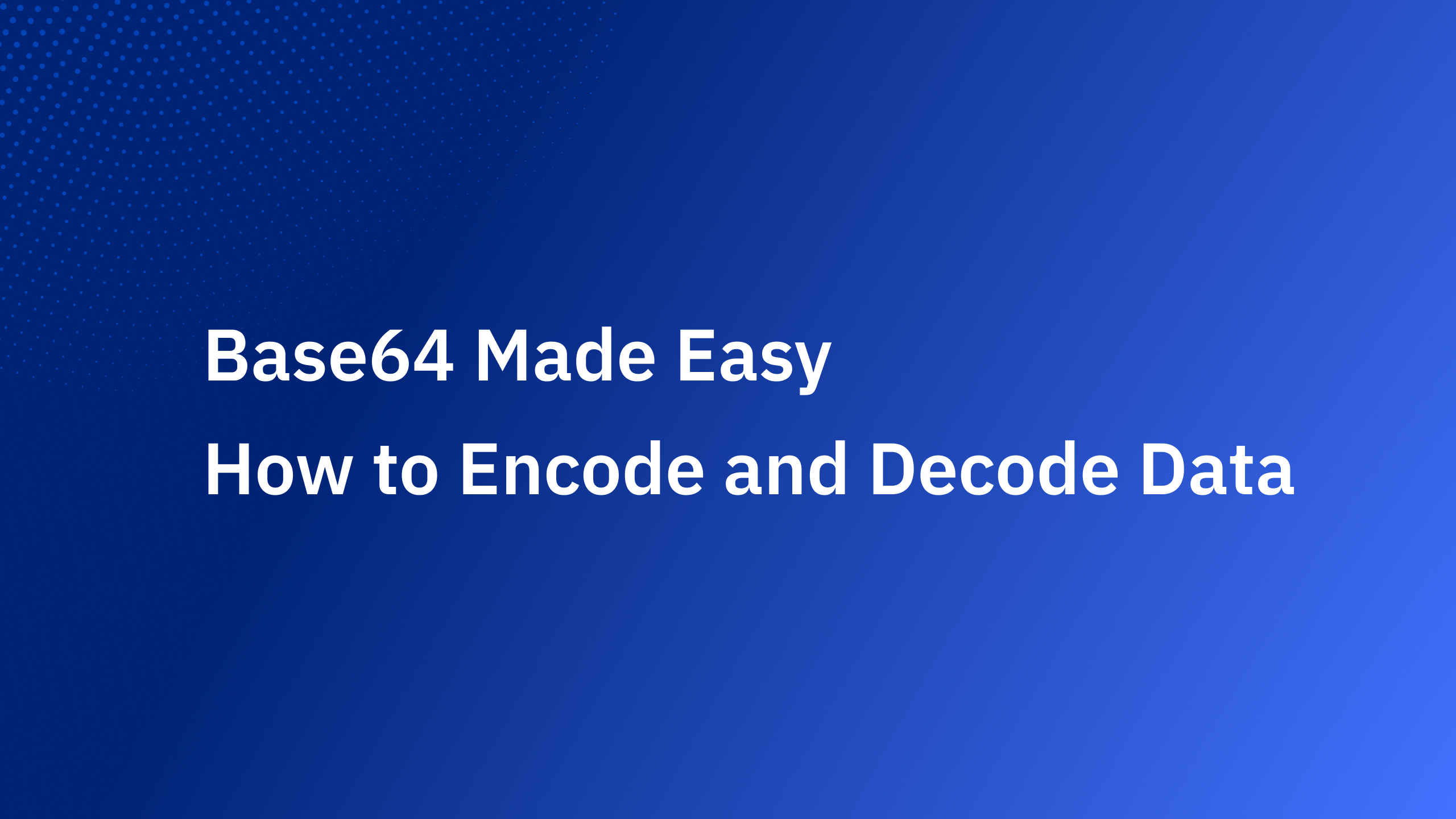If you’ve been working with APIs, authentication, or identity protocols like OAuth 2.0 or OpenID Connect, you’ve likely encountered JWT and JWE.
These acronyms often confuse beginners because they both deal with tokens, JSON, and security — but they’re not the same thing.
In this post, we’ll break down JWE vs JWT in plain language, show you their structures, and explain when to use each.
We’ll also share free tools to help you debug, generate, and secure tokens without the headache.
What is JWT?
JWT stands for JSON Web Token — a compact, URL-safe way to represent claims between two parties.
A typical JWT has three parts, separated by dots (.):
xxxxx.yyyyy.zzzzzWhere:
- Header – contains metadata like token type and signing algorithm (Base64URL encoded JSON)
- Payload – contains the actual claims or data (Base64URL encoded JSON)
- Signature – ensures the token hasn’t been tampered with
Example JWT (shortened for readability):
eyJhbGciOiJSUzI1NiIsInR5cCI6IkpXVCJ9
.eyJzdWIiOiIxMjM0NTY3ODkwIiwibmFtZSI6IkpvaG4gRG9lIiwiaWF0IjoxNTE2MjM5MDIyfQ
.SflKxwRJSMeKKF2QT4fwpMeJf36POk6yJV_adQssw5cDecoded Header (JSON)
{
"alg": "RS256",
"typ": "JWT"
}
Decoded Payload (JSON)
{
"sub": "1234567890",
"name": "John Doe",
"iat": 1516239022
}
What is JWE?
A JSON Web Encryption (JWE) token is a way to transmit data securely by encrypting the payload. Unlike a JWT (which is typically just signed), a JWE ensures that only the intended recipient can read the contents.
How JWE Encryption Works
When you create a JWE, the process typically involves two keys:
- A content encryption key (CEK) — used to encrypt the actual payload (claims).
- A recipient’s public key (or shared secret) — used to encrypt the CEK itself.
This means:
- The payload data is encrypted with the CEK using a symmetric encryption algorithm (e.g., AES).
- The CEK is then encrypted with the recipient’s key using an asymmetric algorithm (e.g., RSA or ECDH).
The result:
Even if someone intercepts the JWE, they can’t read the payload unless they have the private key to decrypt the CEK.
Structure of a JWE Token
A JWE consists of five base64url-encoded parts, separated by dots (.):
<Protected Header>
.<Encrypted Key>
.<Initialization Vector>
.<Ciphertext>
.<Authentication Tag>Where:
- Protected Header
- Specifies metadata such as:
"alg"→ key management algorithm (e.g.,RSA-OAEP)"enc"→ content encryption algorithm (e.g.,A256GCM)"kid"→ key ID
- Specifies metadata such as:
- Encrypted Key
- The CEK, encrypted using the algorithm in
"alg". - Only the intended recipient can decrypt it using their private key.
- The CEK, encrypted using the algorithm in
- Initialization Vector (IV)
- A random value used for the encryption process to ensure security even if the same data is encrypted multiple times.
- Ciphertext
- The encrypted payload (claims). This is where your sensitive data lives — but in unreadable form without the key.
- Authentication Tag
- Ensures data integrity and authenticity. If the ciphertext is tampered with, the tag will not match, and decryption will fail.
Example JWE (shortened for readability):
eyJhbGciOiJSU0EtT0FFUCIsImVuYyI6IkEyNTZHQ00ifQ
.OKOawDo13gRp2ojaHV7LFpPq3jFh0XO...
.48V1_ALb6US04U3b
.5eym8Y5JxJkw3tjMP3FIaQ
.XFBoMYUZodetZdvTiFvSkQ
Decoded Protected Header (JSON)
{
"alg": "RSA-OAEP",
"enc": "A256GCM",
"kid": "my-key-id"
}
The payload here is encrypted, so you can’t read it without the correct decryption key.
When the recipient gets a JWE, they use their private key to decrypt the Encrypted Key, which is then used to decrypt the Ciphertext and retrieve the original payload. This process ensures confidentiality (the payload stays hidden) and integrity (you know it hasn’t been tampered with).
Why Keys Matter in JWT and JWE
Whether you’re signing a JWT or encrypting a JWE, everything depends on having the right cryptographic keys.
- With JWTs, the key is used to sign and verify tokens.
- With JWEs, the key is used to encrypt and decrypt sensitive data.
These keys need to be in the correct format, which is where the JSON Web Key (JWK) standard comes in — a way to represent keys in JSON so they can be easily stored, shared, and used by applications.
How the JWK Generator Fits In
Our free JWK Generator removes the complexity from key creation. It lets you:
- Instantly generate RSA or EC key pairs
- Export them in standard JWK format
- Use them in your applications or with the JWT & JWE Debugger to test signing, verification, encryption, and decryption
This is especially useful when you’re:
- Setting up a new service
- Testing authentication or encryption flows
- Rotating keys for enhanced security
With the right JWK, you can work seamlessly with both JWTs and JWEs — and ensure your tokens are secure from end to end.
JWE vs JWT: Side-by-Side Comparison
When to Use JWE vs JWT
Choosing between JWE and JWT often comes down to what you need to protect.
- Use JWT when:
- You just need to verify data integrity
- The data isn’t sensitive but needs to be tamper-proof
- Example: access tokens for an API that checks roles
- Use JWE when:
- Data confidentiality is critical
- You need to meet compliance standards (HIPAA, GDPR)
- Example: transmitting user Social Security numbers securely
In security terms:
- JWT handles integrity
- JWE handles integrity + confidentiality
That’s why jwt encryption isn’t technically accurate — if you want encryption, you’re talking about JWE.
Common Security Mistakes
Even with the right token type, mistakes happen. Here are common pitfalls:
- Storing tokens in localStorage – vulnerable to XSS
- Not validating signatures – pointless security
- Using weak algorithms – e.g.,
noneor outdated ciphers - Overloading tokens with data – keep them minimal
- Skipping expiration checks – expired tokens can be abused
For deeper protection, always apply jwt security best practices:
- Short token lifetimes
- Strong algorithms (
RS256orES256) - Rotating keys regularly
Try It Yourself: Free Tools
You can experiment with both JWT and JWE easily:
- JWT & JWE Debugger – Decode, verify, and debug tokens in seconds
- JWK Generator – Create JSON Web Keys for signing and encryption
These tools save time and prevent mistakes when working with real-world applications.
Conclusion
Understanding the difference between JWE and JWT is essential for building secure applications.
JWT is great for signed, readable tokens; JWE is the go-to when you need encryption.
The next time you’re deciding between them, think about what’s more important — speed or confidentiality.
And when in doubt, use the free JWT & JWE Debugger and JWK Generator to make your work faster and safer.





_%20A%20Developer%E2%80%99s%20Guide%402x.jpg)


